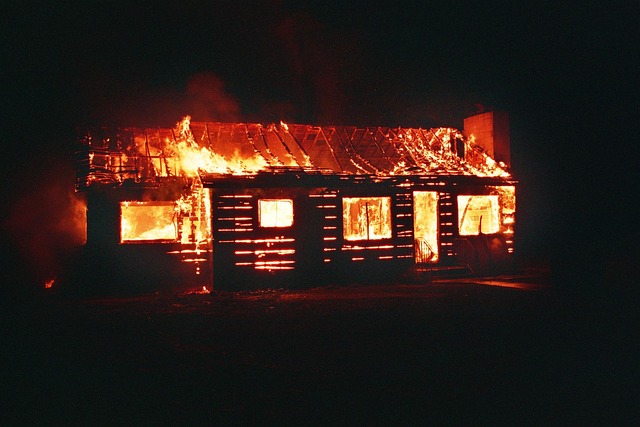Selling a home damaged by fire in California comes with specific legal obligations, primarily regarding disclosure. Sellers must accurately communicate the property's history and any known safety hazards, including structural issues, water damage, and smoke residue, in the Property Disclosure Statement (PDS). Transparency is key to helping buyers make informed decisions and avoiding future legal complications. Understanding these requirements, assessing damage, and working with professionals is crucial for a successful sale while adhering to California's strict disclosure laws.
Selling your home due to fire damage in California involves navigating stringent disclosure laws. This comprehensive guide breaks down everything you need to know, focusing on California’s specific regulations regarding fire damage disclosures. We’ll explore what information must be revealed, the potential impact on property value, and crucial steps for ensuring full compliance during the sale. By understanding these aspects, you can confidently navigate this process and sell your home effectively.
- Understanding California's Disclosure Laws for Fire Damage
- What Information Must Be Disclosed When Selling a Home with Fire Damage?
- The Impact of Fire Damage on Your Property Value and Sale
- Steps to Ensure Full Compliance During the Selling Process
Understanding California's Disclosure Laws for Fire Damage

In California, selling a home affected by fire damage comes with specific legal requirements. The state’s disclosure laws mandate that sellers must reveal any known issues related to potential hazards, including fire-related problems. This is crucial for buyers to make informed decisions and to understand the extent of any necessary repairs or renovations.
When a property has experienced fire damage, California law requires sellers to disclose this information in the Property Disclosure Statement (PDS). The PDS should detail the nature and extent of the damage, such as structural issues, water damage, or smoke residue, as these can impact the home’s value and safety. Buyers are encouraged to have their own professional inspection to verify the disclosed information and assess any potential hidden problems. Understanding these disclosure laws is essential for anyone looking to sell a home due to fire damage in California.
What Information Must Be Disclosed When Selling a Home with Fire Damage?

When selling a home in California with fire damage, there are specific disclosure requirements homeowners must adhere to. The key is to be transparent and provide potential buyers with all relevant information about the property’s history and any existing issues. This includes details about the fire, such as when it occurred, the extent of the damage, and whether professional repairs have been carried out. Any structural changes or renovations made after the fire should also be disclosed.
California law mandates that sellers reveal pertinent facts known to them that might affect a buyer’s decision, especially regarding safety hazards. Fire damage can lead to various concerns like structural instability, hidden issues with wiring or plumbing, and potential health risks from asbestos or other hazardous materials. Sellers must ensure they accurately communicate the nature of these issues, even if repairs were done, to help buyers make informed choices and avoid potential legal complications in the future.
The Impact of Fire Damage on Your Property Value and Sale

Fire damage can significantly impact your property’s value and sale potential, especially in competitive markets like California. When a home experiences a fire, it leaves visible scars that prospective buyers may view as red flags. Not only does this affect the overall aesthetic appeal, but it also raises concerns about structural integrity and hidden repair needs.
In California, real estate disclosure laws require sellers to disclose any known material defects, including fire damage. While this transparency is essential for buying and selling fairness, it can still present a challenge for homeowners. Repairing fire damage might be costly, and buyers may negotiate prices accordingly or even walk away if the repairs are perceived as extensive. Therefore, understanding the scope of damage and working with professionals to assess and repair is crucial for anyone looking to sell their home due to fire damage in California.
Steps to Ensure Full Compliance During the Selling Process

When selling a home in California due to fire damage, ensuring full compliance with real estate disclosure laws is paramount. The first step is to thoroughly assess the property and document all evidence of fire damage. This includes taking photos and creating detailed reports of affected areas, materials that were damaged, and any potential safety hazards remaining on the premises. Next, consult with a professional restoration estimate who can provide accurate cost estimates for repairs and restore your home to its pre-fire condition.
Once you have this information, it’s crucial to disclose all relevant details accurately and transparently in your property listing. This includes declaring the fire damage, the extent of repairs needed, and any known issues with the property related to the incident. Additionally, stay updated on California’s specific disclosure requirements for selling homes damaged by natural disasters like fires. Engaging a real estate professional familiar with these laws can help ensure you meet all necessary obligations before putting your home on the market.
Selling a home with fire damage in California requires strict adherence to disclosure laws. By understanding what information must be revealed and taking steps to ensure full compliance, you can navigate this process smoothly. Remember, transparency is key to a successful sale, providing potential buyers with accurate insights into your property’s history and current condition. When addressing fire damage, know that it may impact property value but doesn’t necessarily have to hinder the sale—with the right approach, you can still attract buyers and sell your California home efficiently.






